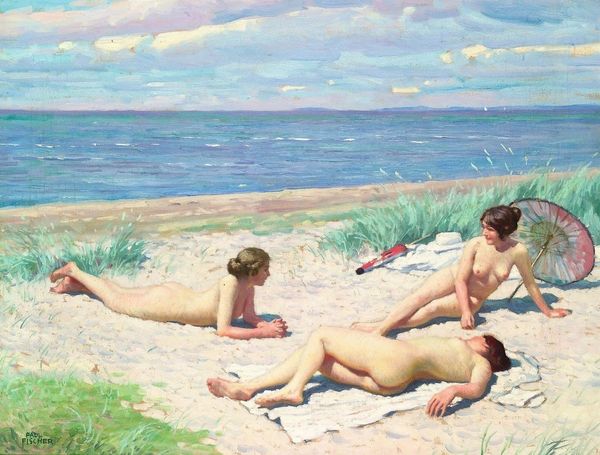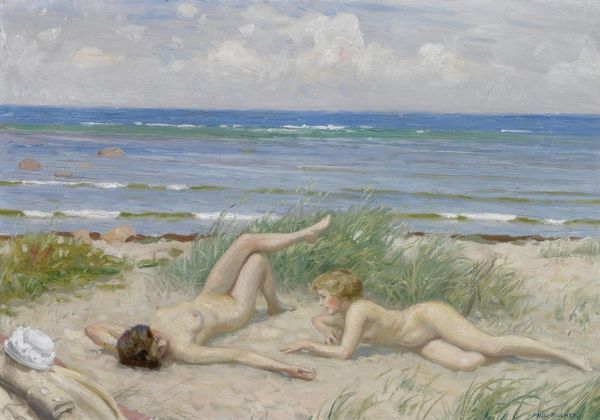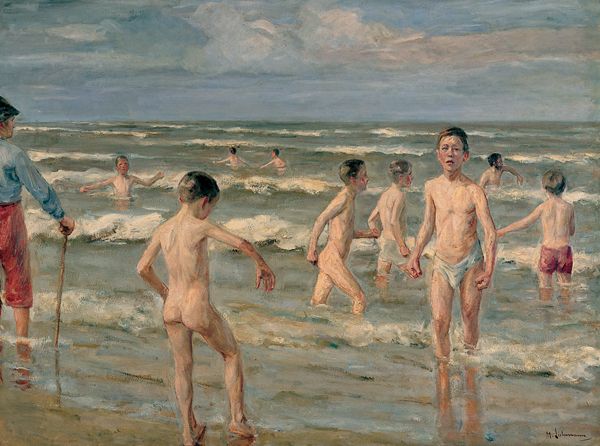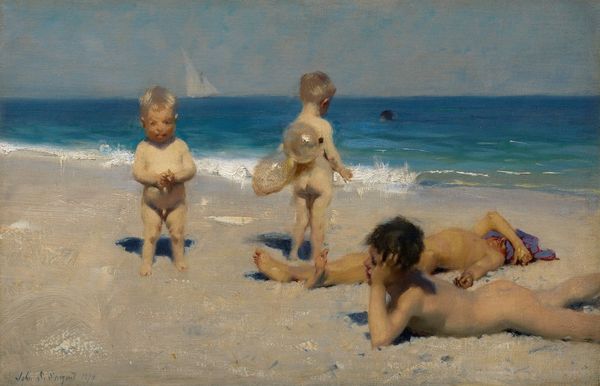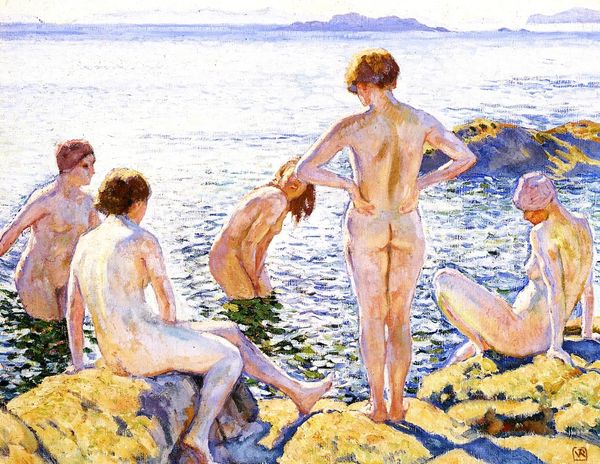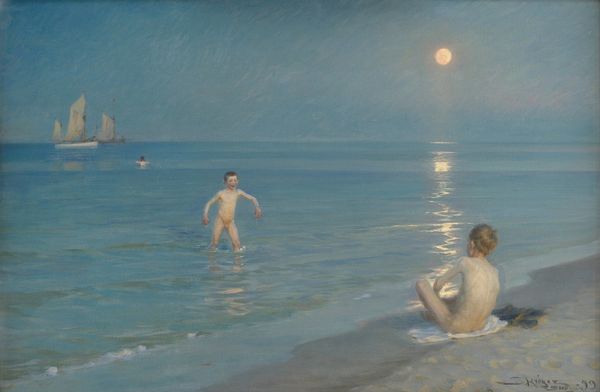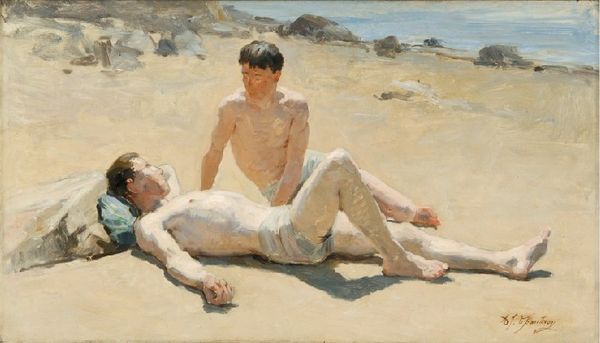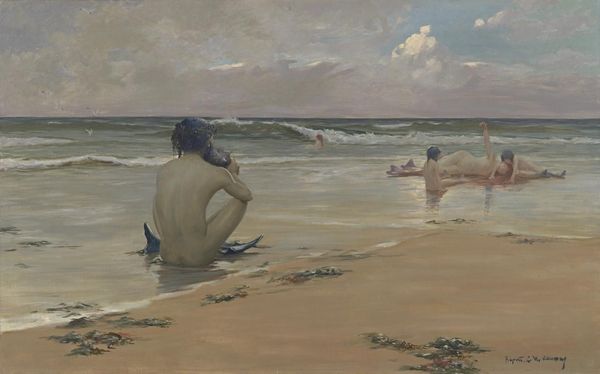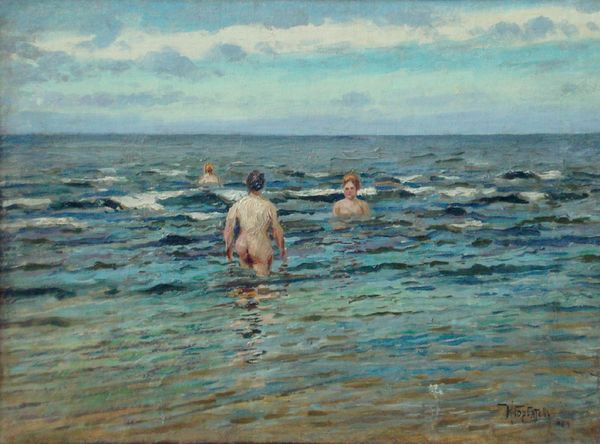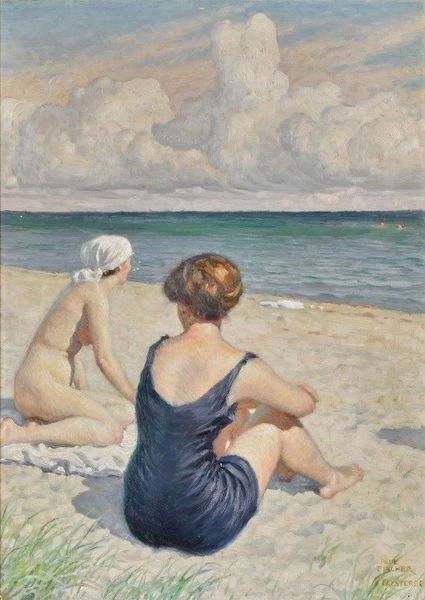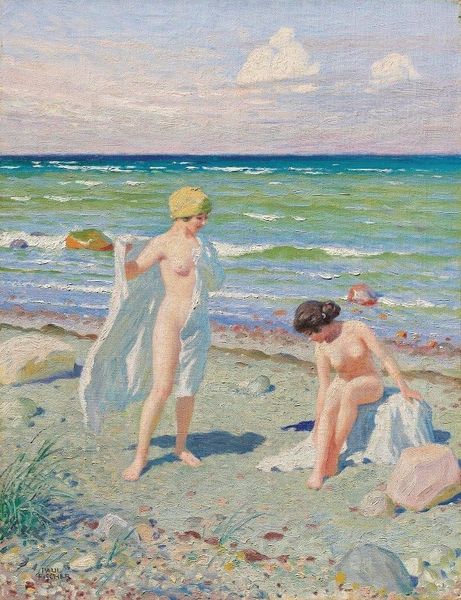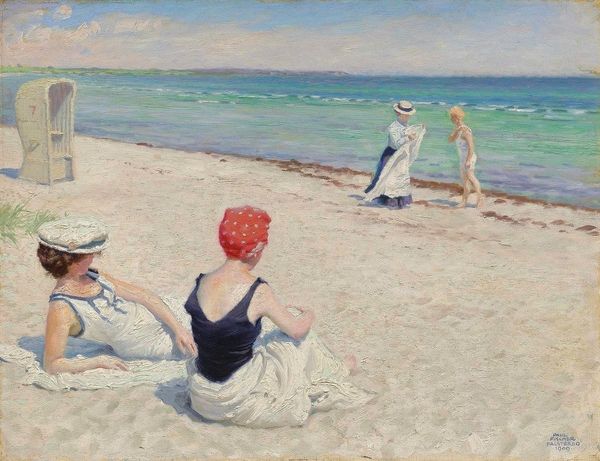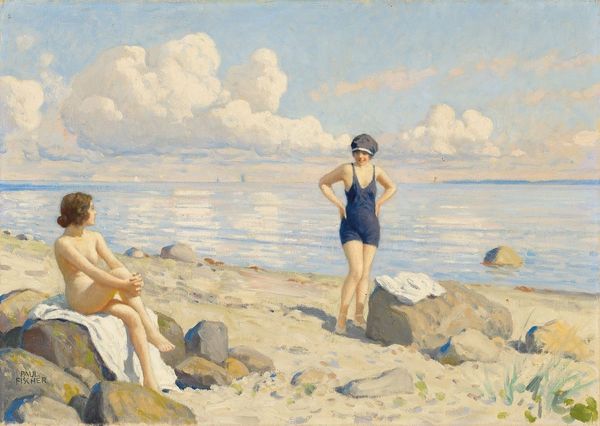
painting, plein-air, oil-paint
#
figurative
#
painting
#
plein-air
#
oil-paint
#
landscape
#
figuration
#
oil painting
#
genre-painting
#
nude
#
realism
Copyright: Public Domain: Artvee
Curator: The painting before us is called "Strandparti med badende kvinder" by Paul Fischer. The piece employs oil paint in what seems like a plein-air style. The artist successfully portrays three nude women in what appears to be a typical summer outing on the shore. Editor: There’s a tranquility that emanates from this work. The soft pastel palette creates a serene and somewhat dreamlike quality. But I also sense a slight tension, perhaps related to how we’re viewing these women. Curator: Precisely. Fischer painted genre scenes in late 19th-century Denmark. So, considering his position within the established art world of the time, what social dynamics are at play here? How does depicting women in this natural setting reflect or subvert societal norms? Editor: Right. These women are in a private moment on the beach, their nudity framed by a heteronormative gaze of the time, but also perhaps an implication of burgeoning female emancipation, in this era. Their freedom feels somewhat radical given the period’s constraints. Curator: Consider also the context of realism as an artistic movement during that time. What might Fischer be trying to say about idealised vs. natural female form through these less polished bodies? Editor: Well, that also opens questions about voyeurism. Fischer is inviting viewers to engage, almost undetected. He creates that feeling through the natural scene, where he successfully subverts our male centered culture using female naturalness. It asks for the question to what end. Curator: An important nuance. And one could argue whether paintings of nude women have a public benefit, even if art tries to achieve such freedom. Do we consider the audience, the power relationship between the artist, subject, and viewer? Editor: Absolutely. This painting then is more than just a pretty picture of a Danish shore. It is part of the ongoing dialogue about who gets to represent whom, and what responsibility comes with it. It reveals cultural values regarding the objectification of the human figure. Curator: Thinking about it this way, "Strandparti med badende kvinder" serves as a reminder that the most pastoral scenes can also be imbued with complexities around gender, observation, and socio-political contexts. Editor: Yes, and perhaps that disquiet, rather than diminishing the artistry, enriches it by provoking essential questions about the society then and our perceptions now.
Comments
No comments
Be the first to comment and join the conversation on the ultimate creative platform.
